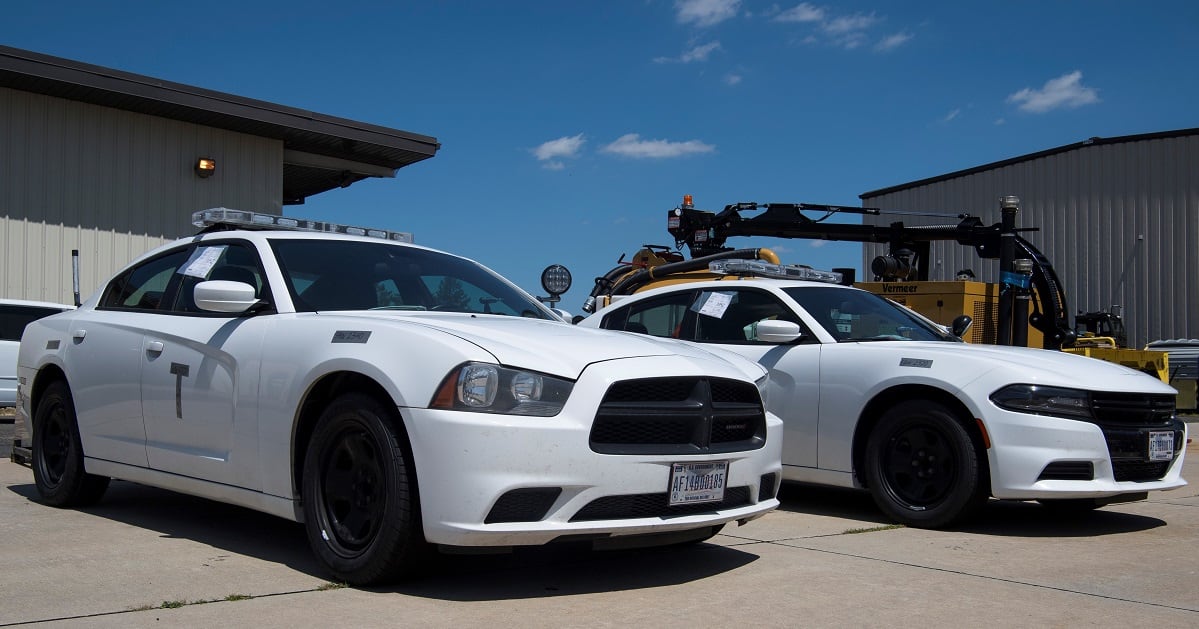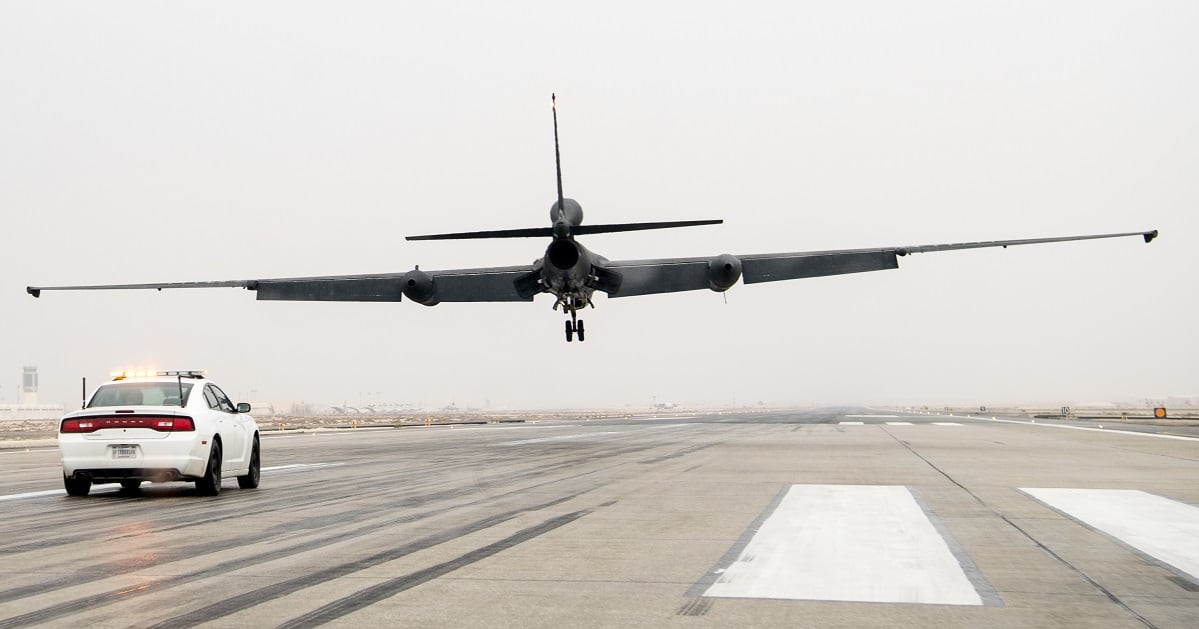The Air Force is sending two Dodge muscle cars across the Atlantic Ocean so they can chase U-2 Dragon Lady aircraft.
But loading the cars and a transportation truck onto another aircraft for the journey is posing some unusual hurdles for the 305th Aerial Port Squadron at Joint Base McGuire-Dix-Lakehurst in New Jersey, who were tasked with transporting the vehicles to Royal Air Force Mildenhall in the United Kingdom.
RELATED

“The chase vehicles we received have no Air Transportability Test Loading Agency certification,” said Staff Sgt. Ryan Murray, the 305th Aerial Port Squadron load planning supervisor, according to an Air Force news release.
“They have no fixed area to be restrained or tied down in the aircraft, so there’s no black and white way on how to transport them,” Murray said. “When they arrive to our area like that, they are deemed non-airworthy and that’s when we have to figure out how we can load them safely or we may have to make the call that we can’t load it.”
Given that the Air Transportability Test Loading Agency is based out of Wright-Patterson Air Force Base in Ohio, the agency and the squadron have to work together during the certification process on issues like testing the vehicles.
According to Murray, the squadron must conduct a complete vehicle inspection to determine things like the weight of both axles, the total weight of the vehicle, and the overhang on the front and back of the vehicle to see if it can make it up an aircraft ramp.
“Once we have those measurements, the ATTLA engineer takes the info to create a certification on how to move that cargo,” Murray said.
The process could also be delayed if the receiving unit at Royal Air Force Mildenhall fails to “green sheet” the vehicles, allowing them to move to the top of the list of items designated priority one items.

The barriers related to the transfer may prevent the vehicles from being carried by aircraft. It’s possible that the Air Transport Test Loading Agency won’t certify the vehicles for flight, meaning that they may need to carried on a ship instead.
A long history
Because the U-2 has a very wide wing span for flight at high-altitude, it is difficult to fly close to the ground. To save weight, the plane is equipped only with two centrally located landing gear in the fuselage and one detachable “pogo” gear on each wing, which are attached after the aircraft has come to a full stop.
Because of the high-lift wings, pilots making landings bring the aircraft to a couple feet off the ground then stall and fall the rest of the way.
The decreased visibility of the pilots, combined with the highly efficient wings and the awkward landing gear makes unassisted landings difficult. When the U-2 first arrived on the scene in the mid-'50s, the Air Force used T-33 jet trainers to help guide them to safe takeoffs and landings, but by the end of the decade, the T-33s had been replaced by high-performance chase cars.
“The safest way to land this jet is a nice two-point landing,” said a U-2 pilot in a video posted to YouTube in 2016. "To do that we need a pilot, who is also qualified to land the jet, to drive quickly, right behind it, and give the pilot cues as far as how high his main landing gear is above the runway.
“I’ve got to make sure the pilot has the situational awareness he needs … at that critical time that he is bringing the jet to a full stall,” said the unnamed pilot with the 9th Reconnaissance Wing at Beale Air Force Base, California. “In the safest way possible, you need a car to follow and be in radio communication with the pilot.”
Chasing a Dragon Lady down the runway at 100 mph is exhilarating, he confessed, but the job requires great attention to detail.
“It’s a big balance of observing what the pilot is doing and providing real time corrections so he can land as well as he possibly can and as safe as he possibly can,” he said.




